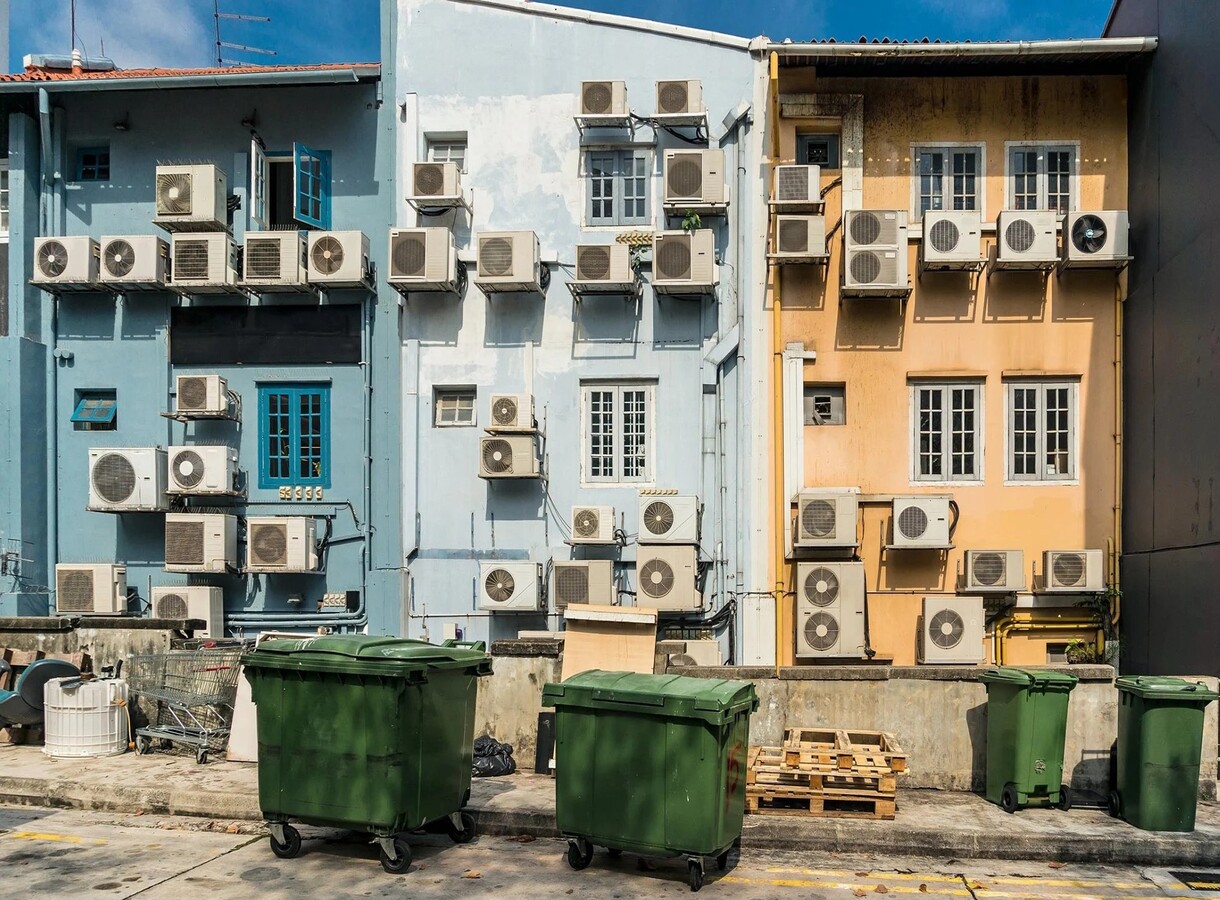Abstract of this article appeared in Times of India
Soaring temperatures are here to stay & cooling has become a necessity. But it has to be done smartly. Not via ACs that guzzle electricity & worsen outdoor heat at a low-penetration level
Last Wednesday the automatic weather station sensor at Delhi’s Mungeshpur reported a record high temperature of 52.9°C. Fortunately, the figure has turned out to be incorrect. India Meteorological Department (IMD) has since said the reading suffered from “malfunctioning of the sensor”

But that is no cause for cheer. Delhi has already shattered its temperature record when Narela clocked 49.9°C on May 28. and the respite from a Mungeshpur like high is only temporary. All climate models show that Delhi will likely reach 52.9°C in the next few years due to climate change. our focus, therefore, should be on saving lives and livelihoods from extreme heat, which is projected to become even more severe and prolonged in the coming years.
This is not being alarmist, just realistic. Those who believe that runaway global warming and its consequences, such as rising temperatures and heatwaves, can be managed with a business-as-usual approach are deluding themselves. The fact are so stark that only a climate denier can ignore them.
Double whammy: Heat & humidity 2023 was the second warmest year on record in India, and the past decade (2014-2023) was the warmest ever, In fact, 12 of the 15 warmest years occurred during the recent 15 years (2009-2023). Over the last decade, almost all major cities in India have broken their temperature records.
But it’s not only the temperature that’s the problem. A simultaneous increase in temperature and humidity is what’s becoming the biggest killer. IMD has started measuring and releasing the “Feels Like” or “Real Feel” temperature on a pilot basis this year. This metric combines heat and humidity to measure the actual impact of heat on the human body. A feels like temperature above 45°C is considered dangerous for outdoor activates and vulnerable populations. Above 55°C, conditions become unlivable without air conditioning.
In May, multiple stations in Delhi crossed the Feels Like temperature of 55°C. The situation is alarming in other cities as well. On May 3, in Patna maximum temperature was 40.7°C, but Feels Like temperature was an alarming 57°C. While we have no data on the impact this had on Patna’s residents, it was certainly more than just a “discomfort”.
What we are experiencing is just a trailer. It will get worse in the coming years. Every forecast and new study predicts that heatwaves in the Indian subcontinent will take a huge toll on lives and the economy. So, what should be done about it?
ACs unleash a vicious cycle: An obvious solution might seem to be to install room air conditioners (RACs) everywhere. But installing RACs creates a vicious cycle that further exacerbates global warming and hot extremes.
Currently, less than 10% of households in India own an AC, but this number is growing by 10=15% annually RACs are energy guzzlers. Even a 5-star AC consumes 30 times more electricity than an efficient fan. So, even at low-penetration levels, RACs now account for up to 50% of peak load in major metropolitan areas of India. If we rely on ACs, then by 2050, energy requirement for RACs will see a 20-fold increase at the very least. If this energy is produced from coal, it will lead to higher global warming. RACs also warm the planet by emitting refrigerants, which are far more potent in warming the planet than CO2.
At a local level, RACs exacerbate the urban heat island effect by expelling heat outside and increasing outdoor temperatures. To combat higher outdoor heat, we are installing more ACs unleashing a vicious cycle.
Green cooling agenda: However, with Feels Like temperatures soaring above 45°C across most parts of India, cooling is no longer a luxury. It must be viewed as a fundamental right. The question is how to provide cooling to all without further destroying the planet.
- First, we must promote measures that do not require active cooling. We must cool our cities by planting trees and rejuvenating water bodies. We should construct ‘cool houses’ using better construction materials and incorporating passive cooling techniques like improved ventilation and shading. Techniques like cool roofs, one of the simplest and most cost effecting ways to cool a building by painting roofs white, can help keep indoor air temperatures lower by as much as 2-4°C compared to traditional roofs. These measures can be implemented by changing building bylaws, urban planning guidlines and construction technologies.
- Second, We should prioritise centralised cooling projects such as district cooling systems (DCS). These projects supply chilled water to buildings through pipelines, similar to how natural gas is supplied for cooking. The chilled water cools the air inside rooms, just like an RAC. DCS are far more energy-efficient and do not require highly polluting refrigerants. They will also lower cooling costs, making it affordable for most people.
- Third, We should use only highly efficient RACs. To achieve this, we must revise energy-labelling standards to increase the sales of super-efficient ACs in the country.
- Finaly, every city must develop an integrated heating and cooling action plan to protect citizens and the economy from severe heat impacts and to provide sustainable cooling solutions for all. It’s time to prepare our cities for a clear and present danger.
Chandra Bhushan is one of India’s foremost public policy experts and the founder-CEO of International Forum for Environment, Sustainability & Technology (iFOREST).

Chandra – this research is a step in the right direction, how do we accumulate more folks to bring about a voice that is singular towards decarbonization from a policy and implementation perspective. Happy to add how adiabatic cooling in hot/dry regions can also be a game changer and I would be glad to contribute in any way possible.